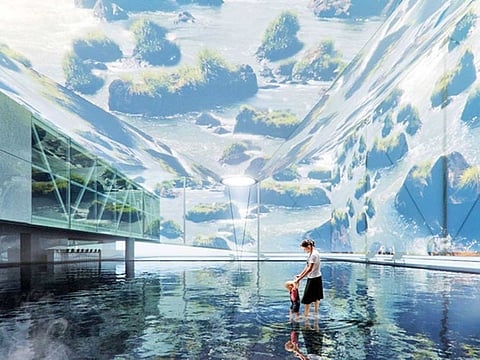Design Diary: Most beautiful pavilions at the Dubai Expo 2020
As we inch closer to the much awaited global event, here is a glimpse into what to expect

I understand we are still far away from October 2020, when Dubai will welcome the world to what is shaping up to be one of the most future forward Expos in the event’s history. And rightly so; circa 2020, connecting minds and creating the future should be our collective priority. Who better a host then, than Dubai, where these values are already shaping our urban fabric.
As a long term resident of the UAE, of course, the Santiago Calatrava designed, aviary-inspired UAE pavilion holds a special place in my heart. But as designs for more and more pavilions are revealed, these stand out for me.
Spain
Set within the Sustainability District of the Expo site, Madrid-based architects Amann-Canovas-Maruri’s solution for the Spanish Pavilion features a series of conical structures that are designed to facilitate thermal and acoustic insulation. Constructed using recyclable materials such as wood, iron, and fabric, and referencing traditional insulation techniques in combination with innovative solutions, the structure will shelter a basement exhibition space that will connect to open public areas for entertainment. The Pavilion will also acknowledge Spain’s Hispanic-Arab past and tip its hat to a period of Islamic rule from 711-1492, that is often described as the ‘Golden Age’ of religious and ethnic tolerance between the three Abrahamic religions.
Saudi Arabia
Our neighbour’s pavilion will brilliantly emphasise the aspirations of the Kingdom. Saudi Arabia’s focus on a move away from a fuel-based economy and its recent societal changes are well documented; at the Expo2020, they will offer, quite literally, a window into their fast changing priorities. As the country opens itself to tourism, their pavilion will be the perfect gateway to introduce what Saudi Arabia has to offer to the world. Housing an immersive experience of the Kingdom’s transformation, a diagonal, monolithic mass will rise from the ground, presenting curators with pockets to create tableaus, balancing Saudi Arabia’s traditions with its future. Externally, digitised screens will clad the surface.
Sweden
Designed by Stockholm-based Alessandro Ripellino Architects, Studio Adrien Gardere and Luigi Pardo Architetti, the pavilion will bring together western and eastern influences. Following a nature-inspired theme, hundreds of posts, representing tree trunks will give visitors the impression of walking through a Nordic forest. At the ground level, these ‘trunks’ will establish the public areas, exhibitions and cafes, while offices and conference rooms will be raised aloft — like tree houses — forming a roof over parts of the pavilion. Islamic geometry will inform the design of the wooden lattice screens that will clad the tree houses. Akin to mashrabiyas, these screens will offer shade from the sun and create a dazzling play of light — not far removed from visual effect of the Sun seeping through the verdant forests of Sweden.
Brazil
Designed as a collaboration between architecture firms Ben-Avid, JPG.ARQ, and MMBB Arquitetos, Brazil’s pavilion will be a fully immersive experience that will take visitors back into the rivers, waters and nature of the country — without them ever having to leave the Dubai Expo2020 site.
Surrounded by a shallow pool of water, and enveloped in a tensile structure made of a lightweight white fabric, the pavilion will become an amphitheatre for nature to overflow. Brimming rivers, endless landscapes of lush green vegetation and azure blue skies will surround the visitors as these visuals are projected onto the tensile envelope and lucidly mirrored on the water below. If that is not magical enough, visitors will be able to walk into the reflection pool — becoming truly one with nature, even if it’s only an illusion. It is this, that sense of illusion, that should spurn us into thoughtful action — for one day, the abundance of nature might be reduced to just that, a mirage.
Sign up for the Daily Briefing
Get the latest news and updates straight to your inbox



